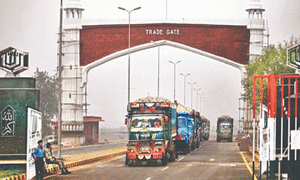Another low-intensity earthquake was felt by Karachi residents on Monday, according to the Pakistan Meteorological Department (PMD).
The tremor was the third within 24 hours.
The most recent quake measured 3.2 on the Richter scale with the city’s densely populated Quaidabad area as its epicentre. The area’s residents had also experienced a similar 3.6-magnitude tremor at 5:33pm yesterday.
Both earthquakes originated at a shallow depth of 10 kilometres beneath the surface.
A separate tremor originating near the city’s Gadap Town was recorded at 1:05am earlier today. It measured 3.2 on the Richter scale and had a depth of 12km.
Ameer Hyder, the chief meteorologist at the Met Office in Karachi, told Dawn.com that the tremors were caused by an active fault line in Landhi.
He noted that the quakes’ intensity was not high and was “gradually declining”. While stating that no formal prediction could be made yet, Hyder expected the tremors to end within a week.

Experts have previously pointed out that such minor seismic activities “preempt” high-intensity earthquakes by constantly releasing accumulated energy within the tectonic plates.
The country had witnessed around 20 low-intensity earthquakes in the first half of February — an average of more than one tremor each day.
In April, jolts were felt in parts of Khyber Pakhtunkhwa and Punjab — including Peshawar, Islamabad, Rawalpindi and Lahore — twice that month.
Pakistan falls on three major tectonic plates — the Arabian, Euro-Asian and Indian — according to geological engineer Muhammad Rehan, creating five seismic zones within the country.
Additional input by Imtiaz Ali
















































